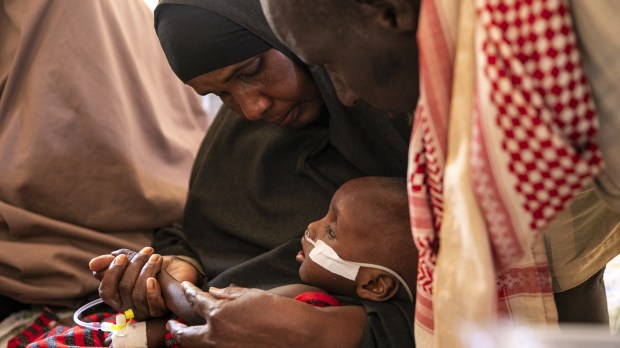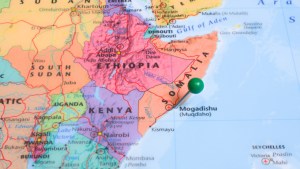If camels are dropping dead, what hope is there for human beings?
That’s the ominous warning from Omar Aden, the chief of party for Catholic Relief Services in Somalia, who added his voice to increasing calls for urgent action in the African nation to prepare for a famine.
“As a global public health specialist and humanitarian, I’ve worked in many difficult contexts,” said the Mogadishu-based Aden. “Yet this seems different. The sight of camel carcasses strewn across the landscape is ominous. Camels are resilient. They are meant to live for extended periods without water – the last animals to remain standing. If they are unable to survive, what are the risks for families and communities?”
The signs of catastrophe have been increasing for several years: Somalia faces a fifth straight poor rainy season. And, according to the New York Times, clinics and hospitals treating malnourished children are reporting double or triple the number of cases compared with last year.
And yet, the Somali government has not yet declared that the country faces a famine.
“A severely malnourished child is admitted to a clinic in Somalia on average every minute of every day,” the Times reported Monday. “With crops and animals decimated in the worst drought to blanket the nation in four decades, millions of Somalis stand on the brink of starvation in an unprecedented humanitarian catastrophe.”
A famine declaration on the part of the Somali government would allow more aid to flow into the nation – one of several in the Horn of Africa that has been dealing with extreme dryness in recent years – and “muster the attention of Western donors who are currently more focused on responding to the fallout from the war in Ukraine,” the Times explained.
Trying not to repeat history
Some 260,000 people died in a 2011 famine in Somalia – before the famine was acknowledged in an official declaration. Aid agencies don’t want to see that happen again.
“The purpose of a famine declaration is to call the international community into extraordinary action. Unfortunately, by the time famine is declared, it is already too late for many,” Sean Callahan, CRS’s president & CEO, said in a statement in September. “With this warning, there is time to save lives. The international community must meet the immediate needs on the ground while also doing a better job at preventing famine in the first place. We can address the myriad causes of food insecurity, like conflict and climate change. With the climate crisis worsening by the day, complacency is not an option.”
Speaking of the record drought in many parts of the Horn of Africa, Shaun Ferris, who leads CRS’s global agricultural and markets team, said in September:
“In the worst areas, there is no greenery, grass, or pasture for the animals. When you walk on the land, it crunches under your feet. It feels barren and scary. Kenya has lost 1.5 million cattle. Ethiopia has lost more than 2 million livestock. Such mass casualty wipes out a community’s assets. This leads to tensions. Without action, global and economic stability could suffer. The stakes couldn’t be any higher.”



